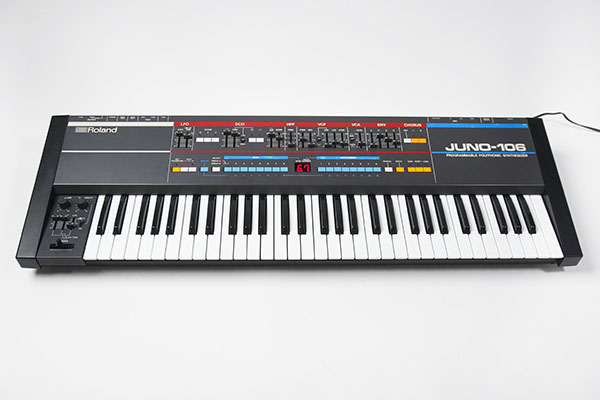It’s no secret that the Roland Juno-106 is a great analog synth – and that the proprietary voice chips are it’s Achilles heel. These chips – one for each of the Juno’s six voices – were dipped in an epoxy coating when they were made back in the early 1980’s. And decades later, it turns out that that epoxy starts becoming conductive as it ages. A conductive coating on an electrical circuit = Not Good.
The fix is pretty straightforward, though you’ll want an experienced tech to handle the repair. Because the problem is so common, Analogue Renaissance has remanufactured the voice chips with bullet-proof modern components, and their voice chips sound exactly like the originals. You can purchase these from Syntaur here. But installing them requires fluency with soldering – and especially with de-soldering. It’s easy to get the circuit board too hot, and lift the delicate traces, causing even more trouble with your Juno.
But the first step is determining whether or not you need to replace voice chips – after all, each voice chip will cost about $60, plus the cost of installation. (If you buy a complete set of six chips, you’ll get a discounted price.) So it’s not cheap – but it will certainly up the value of this classic synthesizer.
To determine whether your Juno-106 needs one or more voice chips, you will:
Boot up in test mode
Play notes, and see in the display which voice is sounding
Take note of any voices which sound irregular
Set the filter to self-oscillate, and check the individual voices again
Take note of any voices which sound irregular
Here are the details for doing each of these steps:
Boot Up in Test Mode
Power on the Juno-106 while holding down the KEY TRANSPOSE button; this will put the synthesizer in Test Mode. The display will read ‘-_’. Press the POLY 1 and POLY 2 buttons together, and now for each note played, the display will show which voice is sounding (‘-1’ through ‘-6’).
You may want to give the Juno five or ten minutes to warm up before you start getting serious about listening to voices. It’s an analog synth, and it needs electrons flowing through those circuits for a while before it settles down and gets stable. It’s no problem to play it during this warm-up period, it just may sound a bit goofy.
Play notes, and see in the display which voice is sounding
Play one note at a time, and the display will indicate which voice is sounding; the Juno will cycle through the voices consecutively. So pressing a key repeatedly, for instance, will show -2, -3, -4, -5, -6, -1, -2, etc. in the display.
Take note of any voices which sound irregular
If a voice sounds goofy while you are doing this, make a note of which voice it is. If you hear a crackling sound every time voice 4 plays, you know that voice 4 likely needs a new voice chip. Other tell-tale signs of a failed chip are voices that sound very thin, or distorted, that hang on after the key is released, or that don’t sound at all.
If a voice sounds just slightly askew, it may just need a calibration. If the voice sounds out of tune, or a bit dark, for instance, that can be corrected by calibrating the Juno (the subject of an upcoming post). Crackly, distorted, or hanging notes, on the other hand, are the indicators of a bad voice chip.
Set the filter to self-oscillate, and check the individual voices again
This is my favorite trick for finding bad voice chips – it works to ferret out a bad chip that sounds normal under most circumstances. The idea is to turn off the oscillators completely (including the sub-oscillator), then make the filter self-oscillate – which means it will ‘play’ a sine wave. Often, a faulty voice chip will lose this ability to self-oscillate.
To set this up, turn the pulse and sawtooth off, and set the SUB and NOISE sliders all the way down. Now, make the filter self-oscillate by setting the RES slider fully on – you should now hear a sine wave sound, and the FREQ slider will control its pitch. Set the VFC ENV and LFO sliders all the way down, and with the VCF KYBD slider fully upward (this opens the filter to match the keyboard tracking), the filter should play chromatically as you play the keys.
Take note of any voices which sound irregular
As you play notes with the filter self-oscillating, if a note doesn’t sound at all, that almost certainly indicates a failed voice chip. So take note of the display when a voice doesn’t play, and like before, it will tell you the voice number which is bad. If a note plays, but it noticeably out of tune, that’s another indicator that your Juno just needs a good calibration.
Now, you should be fully informed of exactly how many voice chips you need, and exactly which voices need them – in other words, which specific chips on the PCB need replacing.
If you find that you need multiple voice chips, you might consider replacing all of them – if several have gone bad, then the others might not be far behind. And your Juno-106 is a good investment – replacing all of the voice chips will ‘future-proof’ it, which will make it an even more valuable instrument!
